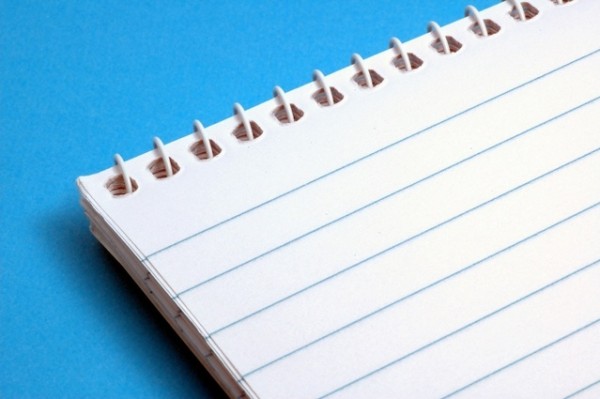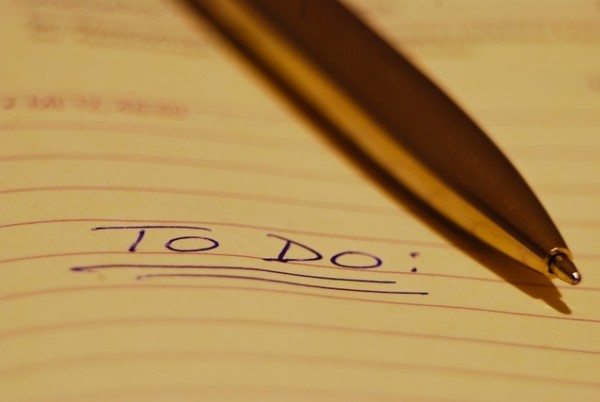To-Do or Not To-Do… Lists
Hey all you Animator-islanders, this week we’re bringing you a few tips on to-do lists. Do you need them? When should you use them? What can you do if they just don’t seem to be helping?
What might a basic to-do list look like?
Go to the grocery store, pick up a new micro-wave, send that important e-mail, weed the garden, write a new blog article…. Obviously, it’s a list of things you want to get done. But you might not really see how this is supposed to help you. You already know what you have to do, right? Sure, but writing it down can have some great benefits. And writing it down efficiently can have even more!

Forget me not!
Some people write to-do lists in bullet-point form, accumulating tasks they don’t want to forget about. This method can be quite helpful – after all, if you don’t have to have all those tasks crammed in your head; you can use your brain for other stuff and you won’t have to stress about trying remembering to finish the last two slides for that important pitching presentation. To-do lists can help you clear your mind and get a pretty good picture of all the things you need get done.
Plan your day
But a to-do list doesn’t have to stop at a mere task list. In fact, you would be well-advised to turn your daily to-do list into a schedule. Write out the hours of your day and assign the tasks you want to get done next to time slots accordingly. This will help you make a plan for your entire day and can further relieve stress when you no longer have to think “when the heck am I going to get this done?” And if you are forced to seriously think about the time it will take to complete a certain task (will I most likely be at the grocery store from 1:00 to 2:00 or 1:00 to 3:00?) then you will be better able to plan in the future and may even see where you can use your time more efficiently.
Motivation
To-do lists can be great motivators – especially if there is a reward system in place. If you see your list of daily tasks written out, and you know that crossing one off will earn you another piece of chocolate, or fifteen minutes of Youtube or game time, you’ll have more incentive to get your chores done. And don’t forget, breaks can be rewards too!
Prioritize
After you’ve written out your daily goals, it should be clear to you which ones need to get done first. Prioritize your list. You can bold, highlight, or underline your most important tasks. Make them stick out. If you’ve created a daily plan, put these items at the top of the list – these should be the things you aim to get done first if at all possible. Also, make your rewards for accomplishing these goals bigger and better, or the breaks you take after you finish them longer. You should feel good about yourself for having gotten this done. Enjoy it.
Tips:
Plan in breaks
Nobody works around the clock. The time you spend with you feet up should be taken into account too. Breaks revive us and help us to remain motivated to keep going. The list of tasks won’t seem quite so long and daunting if you know you can put your head down once in a while. You can use breaks as rewards after every task if you want to. This will help to set in the feeling, I’ve just crossed something off of my list and give you some healthy “me time” too. Read more about de-stressing techniques in this series of articles.
Be realistic
You know about what speed you tend to work in for different tasks. Sure, we’d all like to be a bit faster and cram more activities into our days sometimes, but let’s get real. If you make a list that is too ambitious, you’ll only end up feeling let down at the end of the day. Don’t get me wrong, you should push yourself to get your chores done (that’s what making this list is all about) but realistic time planning is going to save you a lot of frustration in the end. If you’re looking to improve your speed, take it in steps day by day and you’re more likely to get there.
Hang it on the wall
Instead of keeping your to-do list hidden on your phone or on a small scrap of paper somewhere (was it on the kitchen table? In the bedroom?) try hanging it up in plain sight. Make it bright and colorful, big and bold so that you notice it. Make it look nice, decorated and give you a sense of the fuzzies. You want this list to act as your accountability in a sense, so you should like looking at it. And, of course, if it’s staring you in the face all day you are more likely to get your act together… even if it’s only from guilt!

Be specific
Writing down “finish presentation” is a good start for making a to-do list, but if you sketch out exactly what you have to do, it can make seeing and reaching your goal easier. Try making sub-lists (if needed on their own sheets of paper) for each task. If you write “cite all sources, add slide animation, insert updated graph…” on your list, not only will you make sure you haven’t forgotten anything, but breaking down larger tasks makes them seem more manageable. Plus you get more opportunities to cross items off, which is a reward in itself.
Have a daily list and a near-future list
Lists with long-term goals are great, but they typically aren’t going to do you much good for the day at hand. Write down what you want to accomplish for the day. Long lists can be daunting, and frankly if they include things you know you aren’t going to do today, it’s just giving you a reminder that there’s something looming over your head.
Instead, to keep your long-term goals in mind, give them a list of their own. Maybe by the end of February you want to have re-tiled the bathroom, and by the March 15th you want to have your next cartoon online. It’s good to have long-term goals too, and reading them now and again can help us to stay focused on them.
Use alarms
Going on a fifteen minute break now? Great! But set an alarm to make sure it stays that way. It’s amazing how quickly those minutes will be up. Don’t let yourself fall into a distraction pit.
Make your list the night before
When you get up in the morning and want to jump into your day, starting with a list might dragLoose, attached parts tend to start moving with a delay and lag behind because of inertia. This is clearly visible at th... More down that energy. Try making your daily to-do list the night before so that when you wake up in the morning you already know your plan of action and can start right away. This way, you won’t feel like you’ve wasted any precious time with “just” making a game plan.
Some people may prefer making their lists right at the start of the new workday, so give both methods a try and see what works for you!
Those are our tips, how about yours? What ways do you find to-do lists helpful? Do you use them on a regular basis?








I recommend a free app called ”Wunderlist” for those who’d rather have the list on their phone. It’s really good, easy to read, the tasks you’ve completed disappear after you cross them out and it’s satisfying to watch the list get smaller and smaller. You can star the most important tasks too. It helped me a lot with keeping my desk free of little post it notes filled with lists.